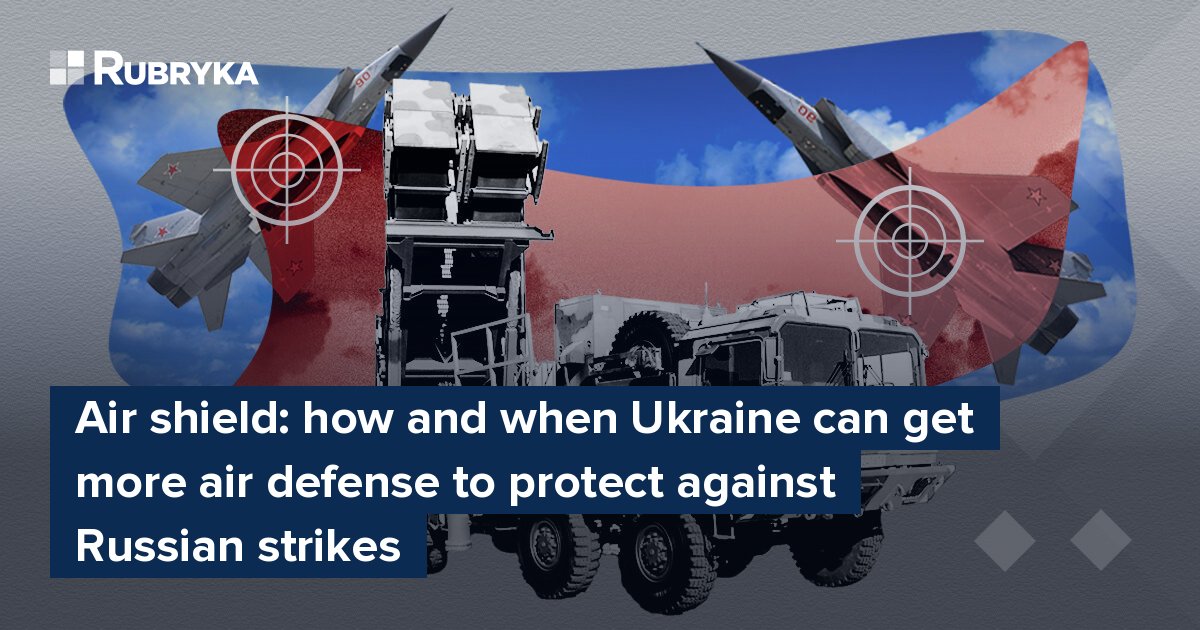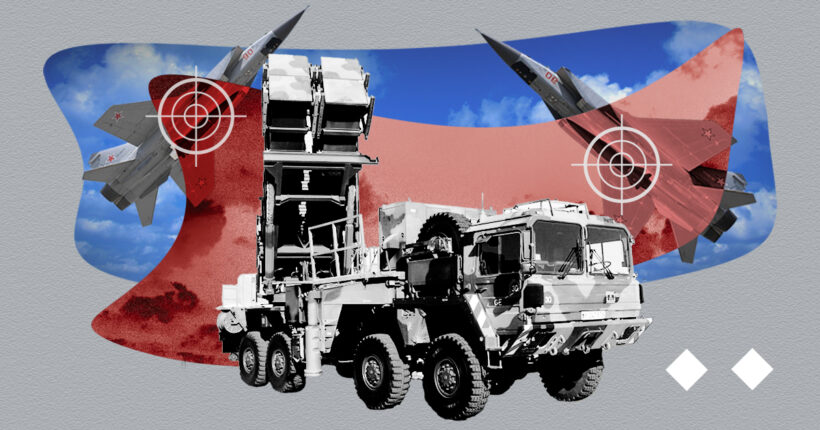
All summer and fall, Russia stockpiled missiles — and used them for particularly large-scale strikes on Ukraine on December 29 and January 2. In total, the enemy fired more than 200 rockets and 71 Shahed drones. Kyiv, Kharkiv, Konotop, Lviv, Smila, Odesa, and Dnipro were affected.
Ukrainian air defense shot down more than 80% of cruise missiles, and on January 2, they destroyed ten Kinzhal hypersonic missiles over Kyiv. No army in the world can boast of such a result, but it is still impossible to completely prevent strikes.
What is the problem?
The territory of Ukraine is simply too large to cover all of it with air defense systems. Even the Israeli Iron Dome lets through 10% of rockets, although the entire Jewish state could fit in the Kyiv region.
Ukraine still can't destroy Russian launchers and bombers either: ground systems quickly change position, and planes stay too far from Ukrainian borders. Ukraine lacks long-range missiles to reach military airports like Olenya near Murmansk (even ATACMS can't do it here).
Therefore, for now, the only way to defend against new strikes is to get more anti-aircraft and anti-missile weapons of various types.
What is the solution?
Understand how our air defense system works
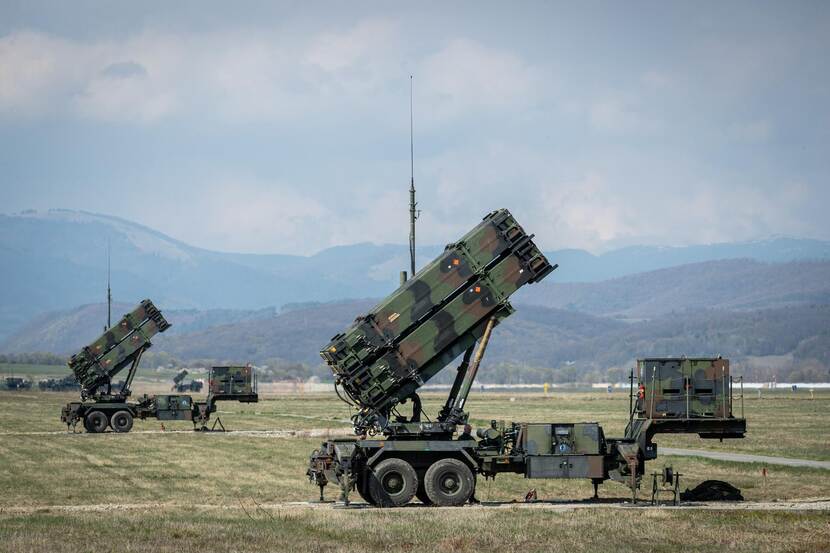
Patriot systems.
The uniqueness lies not only in the fact that Ukraine combines Soviet air defense systems with Western systems received from the allies. In general, the scheme of actions of Ukrainian defense resembles the descriptions of school problems on logic, and the fact that the soldiers shoot down under a hundred missiles in such conditions is a super achievement.
- Patriot systems, which Ukraine has three, and one SAMP/T can destroy everything: from Kinzhal missiles to Shahed drones. But usually, only ballistic targets are shot down because there are not enough missiles. There are also few batteries, so most regions remain unprotected from the same Iskanders.
- To hit cruise missiles like the X-101 and drones, Ukraine has NASAMS, Hawk, IRIS-T, Crotale, Soviet S-300, Buks, Arrow, and Wasp systems. They cover the whole country, but they are powerless against ballistics. And in general, rockets have to be saved.
- Therefore, the Armed Forces of Ukraine have economical options against the Shaheds: Gepard self-propelled systems and mobile groups on pickup trucks with anti-aircraft guns and machine guns — because bullets and shells are more affordable than missiles. They are assisted by MANPADS shooters. These anti-Shahed groups can also intercept cruise missiles. There are no problems with ammunition, but the firing range is short.
- On the front lines, the realities are different. Drones such as Orlans and Lancets need to be landed there en masse, and Ukrainian fighters destroy them with missiles from MANPADS, mobile systems, and even machine gun fire. Infantrymen also often have to shoot down planes and helicopters because a big air defense system like the S-300 cannot operate near the front line: the Russians will detect it with drones and destroy it.
- A separate problem at the front and near the border is guided aerial bombs from enemy aircraft. Here, all hopes are for the F-16 jet fighters, the missiles from which will reach Russian ships.
The uniqueness lies not only in the fact that Ukraine combines Soviet air defense systems with Western systems received from the allies. In general, the scheme of actions of Ukraine's defense resembles the descriptions of school problems on logic — and the fact that Ukrainian soldiers shoot down under a hundred missiles in such conditions is a super achievement.
Of course, Ukraine needs more installations of all types, but right now, it can multiply only mobile groups. Here, the formula is simple: we take a civilian pickup truck and mount a Soviet anti-aircraft gun or machine gun.
In the Czech Republic, such systems are put on a production flow — right away with a gun, sights, and thermal imagers, and the Netherlands promised to buy a hundred for Ukraine.
Solution #1: Get more Patriot batteries from allies
"We received not enough help from the West to work against air targets. Unfortunately, to protect the whole of Ukraine, we need many more modern systems," Yurii Ignat, the spokesman of the Air Force of Ukraine, said.
Therefore, Ukrainian authorities used the agreement with the North Atlantic Alliance to request an emergency meeting of the Ukraine-NATO Council on January 10. At it, Kyiv will ask for additional air defense systems and missiles for them.
Of course, the "list of needs" will not be published. Still, before that, Ukrainian high-ranking officials most often talked about additional Patriot systems because it is the American air defense system that can close Ukrainian cities from the Iskanders, Kh-22, and S-300/400, which are the most problematic targets that cannot be shot down with Buk or MANPADS.
In addition, Ukrainian soldiers used Patriot for fire ambushes: they imperceptibly pulled the complex to the front line, shot down several Russian planes, and retreated before the enemy reacted — this is how they destroyed three Su-34 planes near Kherson. The Americans promised to befriend their air defense system with Ukrainian radars — then there will be even more opportunities.
Ukrainian diplomats have already been heard, and Gregory Gaze, CEO of Raytheon, promised to supply five batteries to Ukraine by the end of 2024. But earlier, Volodymyr Zelensky mentioned a much greater need: at least 20 batteries to cover the sky over the country.
Here, Ukraine's key donor could be the United States, which has 60 batteries on duty and does not have a problem of hundreds of missiles being fired at their territory. However, one battery costs a billion dollars, and to talk about Patriot, Ukraine first has to wait until Congress votes on a new aid package for Ukraine.
Then, the Ukrainians will still have to convince the White House and the Pentagon because there is a strange idea in American expert circles that by helping Ukraine, the US will already disarm itself too much and will not be able to defend Taiwan from China.
Spoiler alert: United States actually have 40 spare batteries (!) in stock and can share them without harming themselves. In short, everything will depend on the political will of the White House.
And what to ask other allies? Spain was not against giving Ukraine a battery that is on duty in Turkey as part of NATO, but the Turks wanted to keep it, so Ukraine will have to negotiate here.
The rest are unlikely to help us: Romania, Sweden, and Greece are themselves in the risk zone due to the Russian Federation and Turkey, respectively. Germany already handed over two batteries, and the Netherlands promised only missiles.
However, let's thank them for this because ammunition for the Patriot system is also in short supply. Ukrainians can hope that they will not be left without them. Japan agreed to give the US part of the ammunition for SAMs so that the Americans would send Ukraine theirs, and NATO is buying 1,000 missiles for the same purpose.
Get other air defense systems that can shoot down missiles and Shahed drones
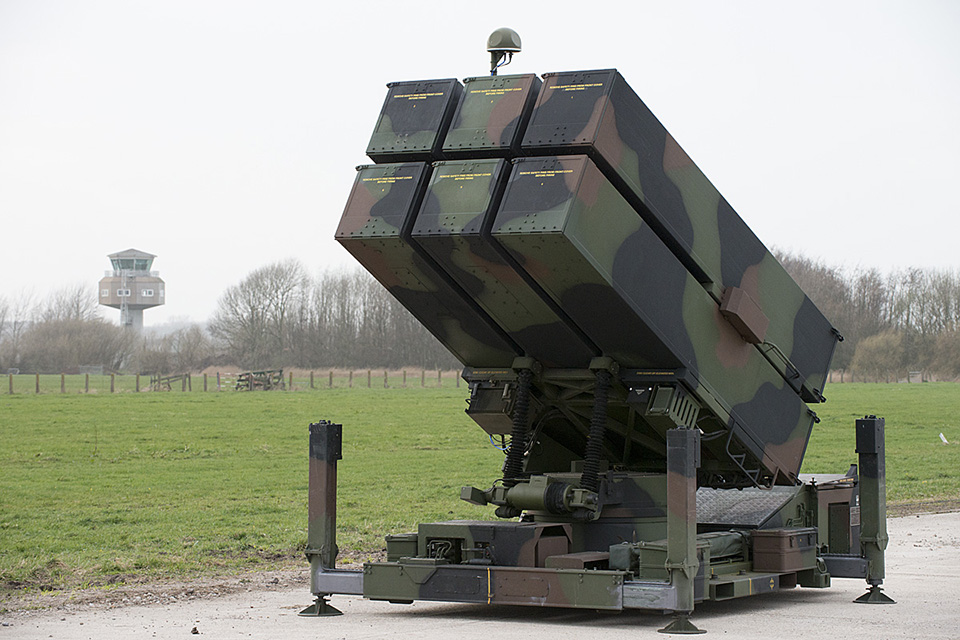
NASAMS installation.
Ukraine also needs to ask its allies for such systems. Oddly enough, they are now even harder to find than the Patriots.
After all, the Americans had enough Patriots and fighter jets to protect the sky, and the Europeans simply did not believe that war was possible in the 21st century, so they did not arm themselves.
A pleasant exception for Ukraine is Norway, where NASAMS air defense systems are produced (the local Kongsberg partnered up with Raytheon, already familiar to readers). Ukraine has already received such systems from the USA. They shoot down 85-100% of targets and are inconspicuous to the enemy. Moreover, Ukraine's allies have stocks of missiles for NASAMS.
The Norwegians will not even have to be convinced: this country is one of Ukraine's key allies. The kingdom gave Ukraine an entire arsenal, from small drones and machine gun installations to self-propelled guns and tanks (and F-16s will follow).
The Americans have already given Ukraine two batteries (six to nine units each) from their own reserves, and the Norwegians promise to deliver two fire platoons in March (each with two three units plus a radar, a command post, and a sensor station). In parallel, Kongsberg produces six more batteries with US money.
According to the Oryx portal, the United States promised to organize four more batteries for Ukraine, Canada will add one, and Lithuania will add two more launchers. The Germans do not have NASAMS but have their own, no less effective complex: IRIS-T. The Diehl Defense company produces them and steadily supplies them to Ukraine. In sum, Ukraine will have many times more Western air defense systems than now — but gradually.
What will the speed of delivery depend on? Here, Washington or Berlin no longer lacks political will. In fact, the Ukrainian army received IRIS-T even earlier than the Bundeswehr. However, according to the Wall Street Journal's conclusion, the Western Military Industry is still working too slowly.
In the 80s, the Germans produced 300 Leopard-2s per year. Now, it takes five to seven years to modernize 50 tanks. Therefore, the main question for Ukraine is whether the defense industry of the NATO countries can speed up.
In addition, the USA promised to give us 60 Gepards — used cars were bought in Jordan, and they only needed to repair them. American engineers have a secret project, FrankenSAM, according to which new anti-aircraft systems will be assembled from on hand. Conditionally, it is possible to mount missiles and radar on trucks. In short, there are different options.
Solution #2: Close the sky with Ukraine's own strength
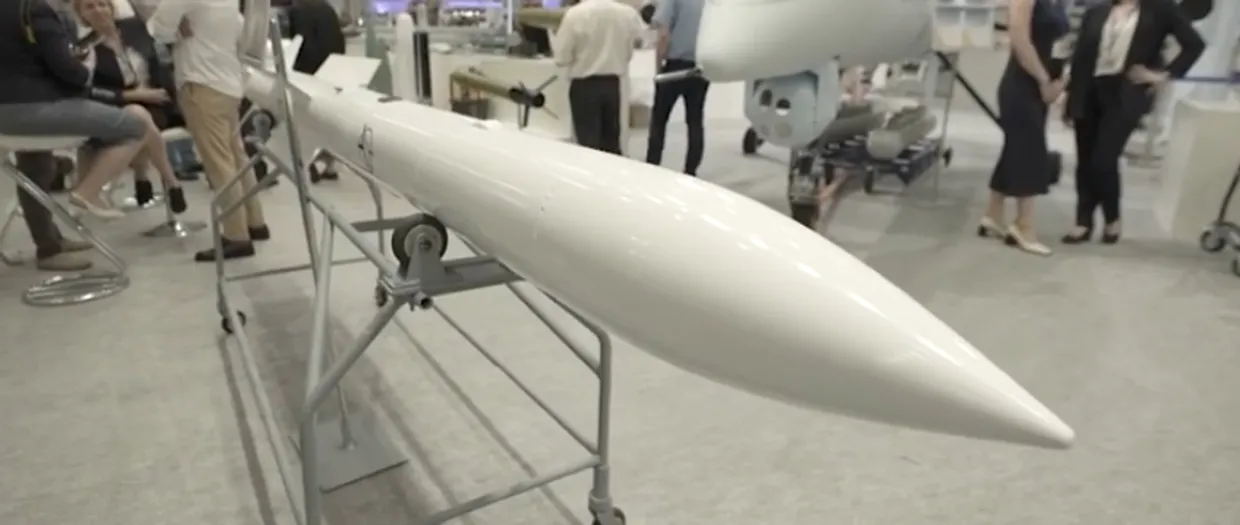
The anti-aircraft missile Coral.
Here, Ukraine can hope to repeat its success with Bohdana. Before the invasion, Ukraine had a test sample of self-propelled guns, and now there is an improved version and mass production.
In the case of air defense, production is a little too far away, but as early as 2021, Oleh Korostelev, the general director of the Luch enterprise, stated that the bureau was developing the Coral anti-aircraft missile. At that time, the developer said that the base was 70% ready to create air defense systems, and it took about two years to develop, but obviously, a full-scale war shifted all deadlines.
If it is possible to build Coral, then Ukraine will get a system with a range of 30 kilometers (approximately like NASAMS). But the Ukrainian complex will be able to shoot down ballistic missiles and will not depend on whether the US Congress gives money for missiles for Patriot.
How long will everything take? This is usually a long process: it took Kongsberg and Raytheon four years to bring NASAMS from the development stage to successful testing. However, the Ministry of Defense calls Coral one of the priorities for 2024.
At the same time, Ukrainian specialists are implementing an even more secret project: the Pokrova electronic warfare system. It should jam satellite navigation like GPS or spoof it by changing the data. Imagine you are in Kyiv's central street, Khreschatyk, but Google Maps "sees" you in the Chernihiv region.
Such a change of concepts will throw the Shahed off course, and the cruise missiles will become less accurate. There is an assumption that the EW can choose false coordinates for spoofing — then a new tactic opens up: to show the drones a false path that will lead them to the sight of the Gepard or a mobile group with machine guns.
However, Ukraine also needs MANPADS. If there are many of them, then soldiers at the front can clear the sky of Russian drones and, in the rear — shoot down more cruise missiles.
For now, Ukraine is also forced to ask for these weapons from the allies, but, as military expert Kyrylo Danylchenko points out, it is time to produce them as well. "A copy of the Igla MANPADS with home-made batteries, the technology of which has been mastered by Hamas," he gives an example.
It should be noted that this Soviet portable complex was developed in the 70s; later, production was localized in, for example, North Korea and Egypt.
In short, the technology there is far from the Patriot level, and there is no reason why Ukraine, which produced the much more sophisticated Neptune and Vilkha, could not also make MANPADS. Then, it will be possible to improve the project, as the Poles once did; as a result, they have their Grom and Piorun installations.
***
In the Ukrainian and Western media, the topic of air defense is often looked at from a pessimistic angle: they say that the Russian Federation continues to produce and launch missiles, and Ukraine cannot prevent it (and it is not always possible to shoot down all 100% of the targets).
However, we should not forget that Ukraine's air defense fighters do not allow Ukrainian cities to turn into ruins and leave the citizens without electricity and heat. Meanwhile, in 2023, Ukrainian intelligence services and the air force began to attack Russian missile carriers: they destroyed the Rostov-on-Don submarine, the Askold missile boat, and the Tu-22 bomber on the ground.
When F-16s with their long-range weapons and drones that fly 1,000 kilometers, promised by the Ministry of Strategic Industries, appear, such opportunities will increase. But the work of the Air Defense Forces will help Ukraine hold out until the turning point.
Newsletter
Digest of the most interesting news: just about the main thing



